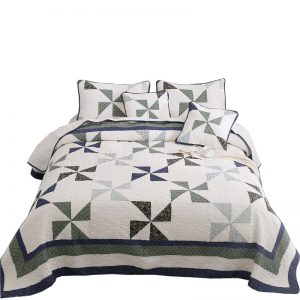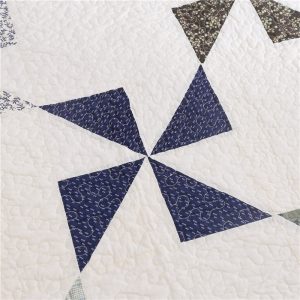(1) It depends on the content of seven-hole cotton in the quilt. The current quality standards do not stipulate how much seven-hole cotton occupies in a quilt to be considered a seven-hole quilt. Therefore, consumers simply choose those quilts with 100% seven-hole cotton and feel more at ease.
(2) It depends on the quality of the quilt fabric. The fabric of the quilt is also very important. Choose those fabrics that are made of tighter and high-count yarns, which are of better quality.
(3) It depends on the stitch of the quilt. We can flatten the quilt on a relatively spacious surface to see if the quilt is flat, whether the thickness of the quilt is uniform, and whether the four sides of the quilt naturally form a straight line. Then check whether each stitch is straight and whether each stitch is even. Measure with the palm of your hand. There are about a few stitches in a tiger’s mouth. Then change the place and measure to see if they are still these few stitches. A good quality quilt should be sewn straight and have the same stitches, so as to ensure the flatness of the quilt.
(4) Observe the color of cotton. Normal new cotton should show a slight yellowish color. The particularly white cotton should be bleached and dull yellow cotton, which is the old cotton wool of the following year.
(5) The new cotton should have a natural and fresh taste, which cannot be smelled by the old cotton.
(6) Pure cotton burns immediately when it encounters a fire. The burning speed is very fast, emitting a yellow flame and a little grayish white smoke. After blowing out the flame, sparks still burned. Taste; similar to burnt paper, the residue is fine, soft gray and black flocculent.
(7) Cotton, as a traditional thermal insulation material, is the most used quilt because of its finer fineness, natural curl, and a middle cavity in the cross section. Advantages: less static electricity, pressure















